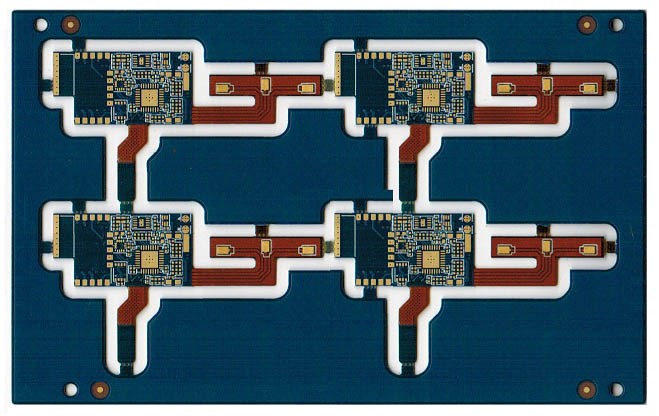Language
Language
Rigid-Flex board as a special kind of interconnection technology, can reduce the electronics assembly size, weight, avoid the attachment errors, implement different assembly under the condition of 3 d assembly, and has the characteristics of light, thin, short, small, has been widely used in computers, aerospace electronics and military electronic equipment, but FPCB is just a process is complex, the high production cost and not easy to change and repair点。

PCB arrangements tend to grow towards frivolous and juveniles. In addition to the high-density electrical circuit board arrangement, there is also a three-dimensional coherent assembly of soft and hard plywood such a major and complicated scale. Rigid and rigid plywood is also called rigid-flexible plywood. With the birth and growth of FPC, the new product of rigid-flexible joint line board (soft and hard jointed board) has gradually been popularized and used in various situations. Therefore, the soft and hard plywood is the flexible wiring board and the old-fashioned rigid wiring board. After many processes, they are combined in accordance with the joint process requirements to form a wiring board with both FPC characteristics and PCB characteristics. It may be used in products with very few unique requirements. There are certain flexible areas and certain rigid areas. It is a great help for throttling the internal space of the product, eliminating the volume of the product, and improving the instinct of the product.
Rigid material experts are quite familiar, and often use FR4 type materials. But the rigid board material used for the soft and hard connection also needs to explore many requests. It needs to be suitable for adhesion and excellent heat resistance to ensure the uniform and stable shape of the rigid-flex joint after being heated. Most manufacturers use rigid board materials of the resin series.
For flexible board (Flex) materials, select substrates and masking films with relatively small size expansion and contraction. Most of the materials are made of harder PI, and some directly manipulate the non-adhesive substrate for production. The soft board materials are as follows:
Polyimide PI. Polymide: Kapton (12.5um/20um/25um/50um/75um). Good flexibility, high temperature resistance (permanent operating temperature is 260C, short-term resistance to 400C), high moisture absorption, excellent electrical characteristics and sluggish characteristics, good tear resistance. Good weather resistance and chemical resistance, and good flame retardancy. The manipulation of polyester imine (PI) is the most popular. 80% of this is the establishment of DuPont of the United States.
Polyester PET. Polyester(25um/50um/75um). Low price, good flexibility and tear resistance. Good sluggish characteristics such as tensile strength and electrical characteristics, excellent water resistance and moisture absorption. However, the shrinkage rate after heating is large, and the high temperature resistance is not good. Not suitable for high-temperature soldering, with a melting point of 250C, which is relatively rare.
The flexible bending zone of the rigid-flexible composite board should be able to withstand 100,000 deflection without interruption, short distance, low instinct, or delamination that is impossible to bear. The flexural resistance adopts a special configuration, and can also be measured with an equivalent instrument. The tested sample should be appropriately compatible with the requirements of the technical model. When arranging, the bending radius should be the reference as shown in the figure below. The arrangement of the bending radius should be consistent with the thickness of the soft plate in the flexible bending zone and the number of layers of the soft plate. The simple reference program is R=WxT. T is the total thickness of the soft board. Single-sided board W is 6, double-sided board 12, and multi-layer board 24. Therefore, the minimum bending radius of the single-sided board is 6 times the board thickness, the double-sided board is 12 times the board thickness, and the multilayer board is 24 times the board thickness. Everything should not be younger than 1.6mm.
In short, for the arrangement of soft and hard plywood, the most important thing is the arrangement of flexible circuit boards. When arranging the flexible board, it is necessary to explore the different materials, thickness and difference of the flexible board's base material, adhesive layer, copper foil, masking layer and solid board, and the surface control. There are also other instincts, such as peel strength and resistance. Flexural instinct, chemical instinct, task temperature, etc. It is even more necessary to explore the installation and full utilization of the arranged flexible board. The decent arrangements in this regard can be fully referenced to the IPC regulations: IPC-D-249 and IPC-2233.